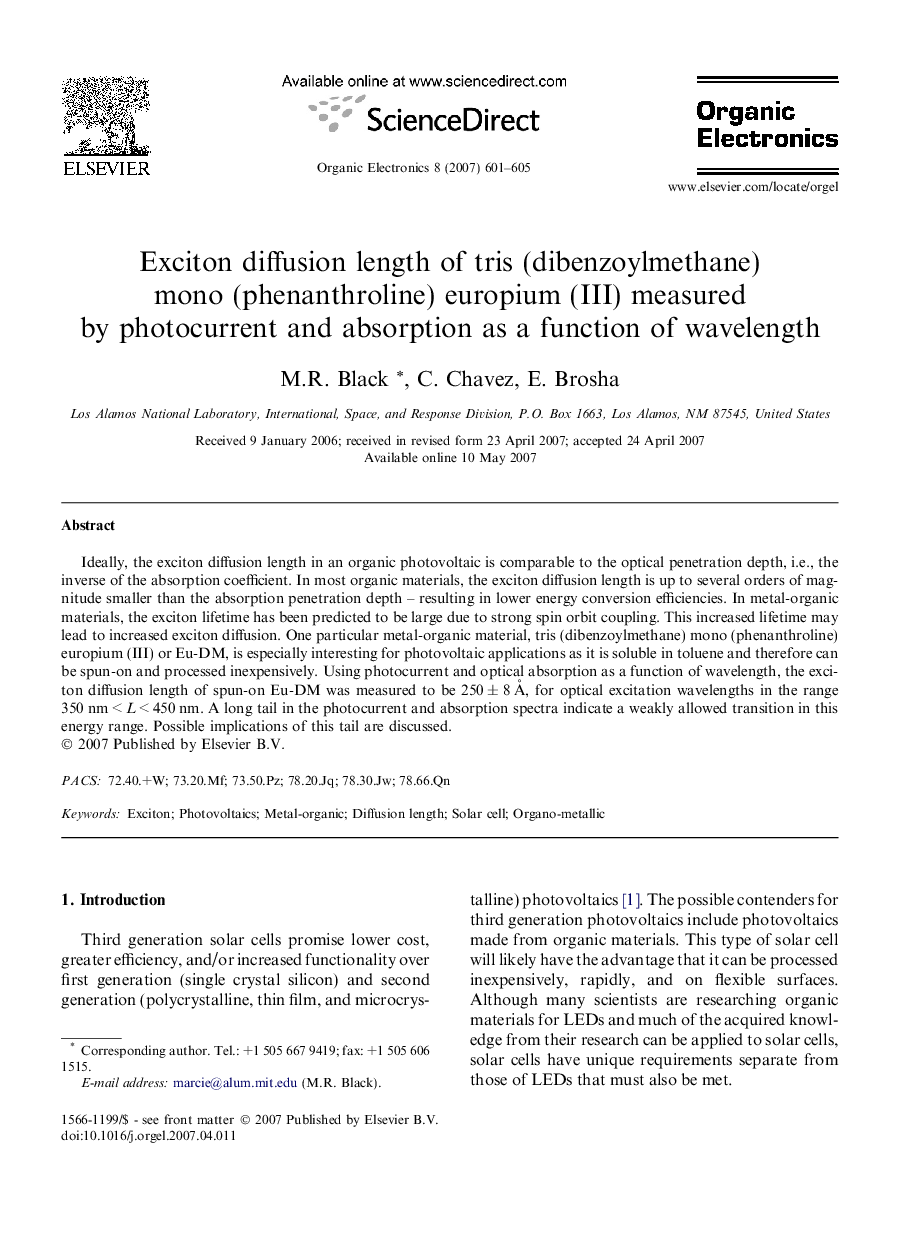| Article ID | Journal | Published Year | Pages | File Type |
|---|---|---|---|---|
| 1268649 | Organic Electronics | 2007 | 5 Pages |
Ideally, the exciton diffusion length in an organic photovoltaic is comparable to the optical penetration depth, i.e., the inverse of the absorption coefficient. In most organic materials, the exciton diffusion length is up to several orders of magnitude smaller than the absorption penetration depth – resulting in lower energy conversion efficiencies. In metal-organic materials, the exciton lifetime has been predicted to be large due to strong spin orbit coupling. This increased lifetime may lead to increased exciton diffusion. One particular metal-organic material, tris (dibenzoylmethane) mono (phenanthroline) europium (III) or Eu-DM, is especially interesting for photovoltaic applications as it is soluble in toluene and therefore can be spun-on and processed inexpensively. Using photocurrent and optical absorption as a function of wavelength, the exciton diffusion length of spun-on Eu-DM was measured to be 250 ± 8 Å, for optical excitation wavelengths in the range 350 nm < L < 450 nm. A long tail in the photocurrent and absorption spectra indicate a weakly allowed transition in this energy range. Possible implications of this tail are discussed.
